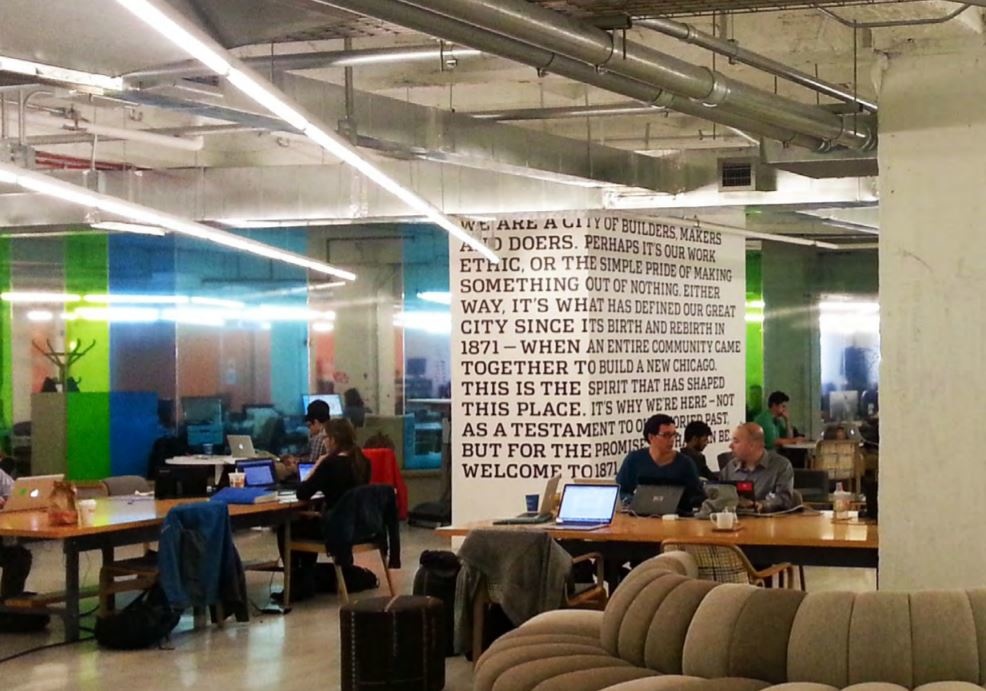
On October 8, 1871, the City of Chicago caught fire and burned for three days. Over 3 square miles of the city was destroyed, several hundred people lost their lives, and over 100,000 were left homeless.1 But Chicagoans seized the opportunity to rebuild, and 142 years later, a vibrant world-class city stands along the banks of the Chicago River and Lake Michigan.
1871 is a 50,000 square co-working space in Chicago’s Merchandise Mart intentionally named to reflect and embody the innovative spirit and drive that was responsible for recreating Chicago. 1871 represents a new way to innovate, to connect, and learn together, all within a range of spaces that can be used in flexible and unique ways to promote the creative inoculations so necessary for innovation and entrepreneurship. Beyond the physical spaces, omnipresent technology provides access to a digital layer of conversation, resources, and expertise that supports and extends the interaction that occurs face to face.
Several miles from 1871 is YouMedia, a 5500 square foot teen learning space that opened in 2009 and is housed in the Harold Washington Library. The overall intent of the space is to increase the number “of youth in Chicago who use online resources and new media as tools to engage in inquiry about their neighborhoods, the city, and the world.”2 YouMedia helps students explore and create with digital tools on a variety of levels, with the support of adult mentors, and within an engaging and creative physical space.
Like 1871, YouMedia is technology-rich. It is also supported by a comprehensive digital presence that serves as a portal for the activities of the space, but more importantly, as a location for the distribution and portrayal of student created digital media. As expected, the site interacts with a variety of social media tools, including Vimeo, Flickr, Twitter, LinkedIn, and YouTube. YouMedia also takes advantages of the natural connections between youth and Facebook to promote the activities of YouMedia as well as the student creations done there.
In both cases, the pervasive nature and use of technology in these spaces presents compelling questions for learning and how technology, and specifically the digital environments it affords, provide an additional context and capacity for a new type of learning ecology for schools.
The emergence of a new ecology for learning
In most schools, the primary location of learning is still the physical “brick and mortar” classroom. In that construct, learners report to a specific location for learning and wait for a learning opportunity to be provided for them. It also means that learners generally learn with the same individuals, around some subject and curriculum, and at a particular time, and most likely, with limited resources.